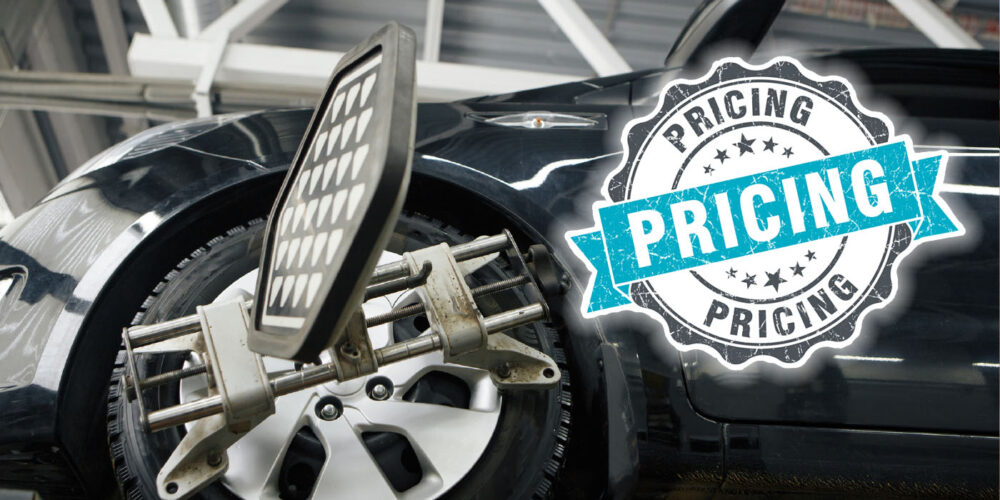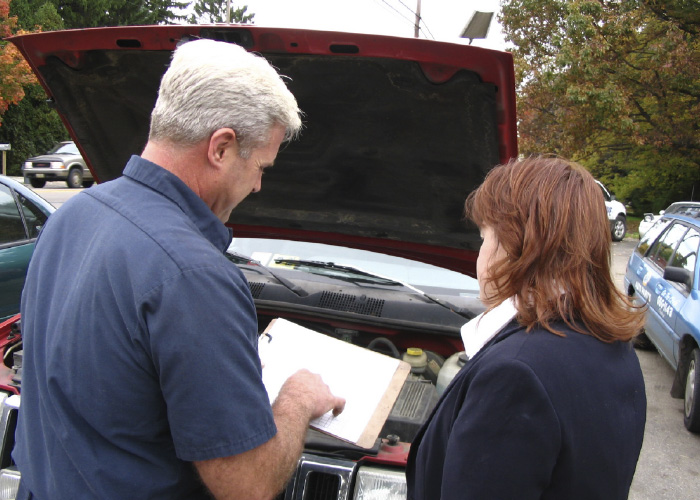What stops technicians and service advisors from performing more alignments? It is a convergence of costs regarding time, equipment and market prices for alignments. It is like the Bermuda Triangle of shop productivity. In other words, the technician can’t make any money, the shop is trying to match prices and outdated alignment equipment makes the situation even worse.
The good news is, there is a way out of this downward spiral.
Pricing is the first barrier to overcome in order to perform more alignments. Don’t worry about meeting the competition’s prices. If they offer an economy-priced alignment, they are likely treating it as a loss leader to attract customers. If you can explain why an alignment is needed to the customer, chances are they will never haggle on the price.
How much should you raise your prices? A simple calculation is to take what you think is fair and add 25 to 35 percent. Take the chance and increase your prices. You deserve it. It is not price gouging. Most alignments are chronically underpriced. Also, raising your prices incentivizes technicians to recommend more alignment services.
Initial Readings Estimate
Alignments have changed. Before, many alignment procedures and suspension designs were the same for various makes and models. You did have unique suspensions like the Rambler trunnions or Ford I-Beams, but it was the same recipe for most cars and light trucks. This allowed many shops to sell alignments off a menu where the only difference was two or four wheels.
Today’s vehicles do not share many of the same designs, alignment procedures or adjustment methods. Also, with different ADAS calibration procedures, the allocation of the amount of labor required to adjust has increased.
This is why the initial readings and adjustment procedures must be separated into two items. What was once pushed as an “alignment check” to spot additional repairs should be the first step in an alignment. The alignment checks measure the angles of a vehicle, and that is it. If adjustments or calibration procedures are required, this can be written up as procedures and parts and not a flat menu price.
The bottleneck for performing alignment checks can be your alignment equipment and service information. The most efficient alignment check is the most profitable. From the time the vehicle is driven into the bay to when the initial measurements are obtained, it is critical.
If you are dealing with difficult targets, software or rolling compensation procedure, it will cost your shop productivity. With the readings from the alignment check, you can form a repair strategy that will adjust the angles and ensure all electronic features, like ADAS functions. This will typically give the customer a more accurate alignment.
Most technicians know that using older alignment equipment can make it difficult to beat or even match the billable hours. This can kill any enthusiasm for recommending and performing alignments.
It is easy to see how new computer technology and sensor heads can increase a technician’s productivity. But, less complicated items can make or break overall alignment productivity. The two items that can bottleneck alignment productivity are turn and slip plates. Even if you have the most sophisticated alignment system with digital cameras and a fast computer, the technician still has to pull the car on the rack and pull the pins on the plates.
One of the newest technologies on the market is self-centering and locking turn and slip plates. With the flip of the switch, it is possible to lock and unlock the slip plates during an adjustment. This saves the tech from circling the vehicle several times to remove and insert pins. Also, it can save a technician the embarrassment of trying to drive off the lift without reinserting the pins.
Don’t Trust Customers
In the TPMS world, there is a philosophy of test and don’t touch. This policy should apply to alignments. For TPMS sensors, the test before you touch can prevent a shop from getting blamed because a sensor stops working.
Not all of your customers are liars. However, there are those customers who assume an alignment will solve their problem with their suspension or steering. These repair orders might just request an alignment with no symptoms reported. When the alignment doesn’t fix the problem, they blame the alignment.
The first step to avoid this problem is to ask the customer if they are experiencing problems like pulling, noises or tire wear. Often, they will tell you what is wrong and why they think an alignment will cure their problem. If they do not divulge the reason for the alignment, write “customer request alignment.”
Always check for any malfunctioning indicator lights or warnings. This step can prevent you from aligning a vehicle with other issues, such as brakes, steering, or even ADAS problems. Check tire pressures and record them on the repair order. A nice touch is to note the recommended pressure on the repair order. Also, tire wear patterns should be checked before attempting to align a vehicle. How the tire wears can tell you much about the vehicle and customer. These three simple items and documentation on the repair order can save you from fixing something that was not your fault.















